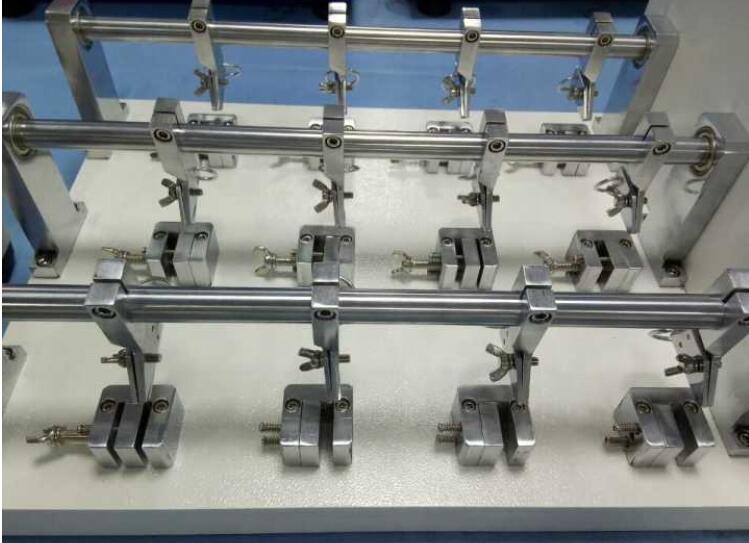Site: Home > Home > News and events
The Leather Flexometer test equipment, also known as the Bally Flex Tester or Rubber Shoes Bending Tester, is a specialized apparatus used to evaluate the flexibility and resistance to cracking of leather, rubber, or similar materials. It simulates the repeated flexing movements that footwear and other materials may undergo during normal use. The Bally Flex Tester is commonly employed in the footwear industry, quality control laboratories, and research and development settings.
Here are some key features and aspects of the Leather Flexometer/Bally Flex Tester:
1. Test Principle: The Leather Flexometer/Bally Flex Tester applies a cyclic bending motion to the material sample. The sample is typically clamped at both ends, and a mechanical arm or roller repeatedly bends the sample back and forth at a specific angle and frequency. This dynamic flexing action simulates the repetitive movements that shoes or other materials experience during walking or flexing.
2. Flexing Parameters: The apparatus allows for the adjustment of various flexing parameters to meet specific testing requirements. These parameters include the flexing angle, which is typically set at 90 degrees or as per relevant standards, and the flexing speed, which is often specified in cycles per minute (CPM) or cycles per hour (CPH).
3. Sample Mounting: The Leather Flexometer/Bally Flex Tester typically includes clamps or fixtures to securely hold the sample during testing. The clamping mechanism ensures that the material is subjected to consistent and repeatable bending forces throughout the test.

4. Observation and Evaluation: During testing, the material is visually inspected at regular intervals or after a set number of flexing cycles. The sample's response to bending, such as the appearance of cracks, delamination, or other forms of damage, is assessed to evaluate its flexibility and durability.
5. Compliance with Standards: Various international standards and specifications exist for flex testing of materials such as leather, rubber, and footwear. These standards may define specific test parameters, acceptance criteria, and sample preparation guidelines. Examples of relevant standards include ISO 5402 for footwear flexing tests and ASTM D1052 for rubber flex testing.
The Leather Flexometer/Bally Flex Tester is a valuable tool to assess the durability and performance of footwear materials, providing insights into the material's ability to withstand repeated flexing without cracking or failure. By subjecting materials to controlled bending forces, manufacturers can assess the quality of their products, make informed design and material choices, and ensure compliance with industry standards and customer expectations.
Note: The specific features and functionalities of the Leather Flexometer/Bally Flex Tester may vary depending on the manufacturer and model. It is important to consult the user manual and relevant testing standards for detailed instructions and specifications when using this equipment.
Copyright 2022:Qinsun Instruments Co., Limited
High-end textile tester supplier Email:info@qinsun-lab.com | Textile Testing Equipment pdf | Tel:021-67800179 |